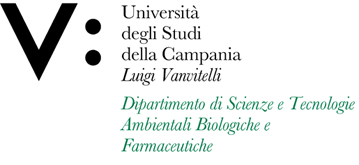Anna MESSERE
Insegnamento di CHIMICA ORGANICA
Corso di laurea in BIOTECNOLOGIE
SSD: CHIM/06
CFU: 8,00
ORE PER UNITÀ DIDATTICA: 64,00
Periodo di Erogazione: Secondo Semestre
Italiano
| Lingua di insegnamento | ITALIANO |
| Contenuti | Struttura, reattività e sintesi dei composti organici: alcani ed cicloalcani; alcheni; gli alchini: |
| Testi di riferimento | P.Y. Bruice CHIMICA ORGANICA III edizione – EdiSES, Napoli, 2017 |
| Obiettivi formativi | Acquisire i concetti fondamentali dei composti del carbonio nonché i meccanismi di reazione |
| Prerequisiti | Conoscenze acquisite nel corso di Chimica generale ed inorganica. Lo studente deve possedere le conoscenze fondamentali su: struttura dell’atomo; orbitali atomici; teoria degli orbitali molecolari; struttura elettronica e legami; acidi e basi; equilibrio chimico; bilanciamento redox |
| Metodologie didattiche | Il corso prevede la frequenza obbligatoria ed è articolato in 64 ore di lezioni frontali svolte dal docente in cui verrà esposta la teoria e verrà applicata a molteplici esempi e risoluzioni di esercizi . Nel suo lavoro personale lo studente dovrà assimilare conoscenze e concetti alla base della chimica organica e risolvere esercizi. |
| Metodi di valutazione | L’esame consiste nel superamento, con una votazione di almeno 16/30, di una prova scritta, della durata di 90 minuti, dove lo studente, attraverso domande a risposta multipla e/o aperta, dovrà applicare le conoscenze acquisite sulla nomenclatura, sulla reattività e sugli aspetti stereochimici dei composti organici ad esercizi di sintesi organica. Il superamento della prova scritta è propedeutico all’esame orale. |
| Altre informazioni | Allo studente è data la possibilità di sostenere una prova scritta di autovalutazione in itinere, strutturata in modo analogo all’esame scritto, ma limitata al programma svolto, con successiva correzione. Potrà avvalersi della presenza di un esercitatore per ricevimento in aula in cui gli studenti potranno chiedere chiarimenti e proporre la risoluzione di esercizi. |
| Programma del corso | Il carbonio: ibridazione degli orbitali, lunghezza di legame, forza di legame, angoli di legame; legami singoli, doppi e tripli; momenti dipolari delle molecole; struttura di carbocationi, carbanioni e radicali; acidi organici e basi organiche, influenza della struttura sul pKa; effetto del pH sulla struttura dei composti organici; acidi e basi di Lewis. |
English
| Teaching language | Italian |
| Contents | Structure, reactivity and synthesis of organic compounds: alkanes and cycloalkanes, alkenes; |
| Textbook and course materials | P.Y. Bruice CHIMICA ORGANICA III edizione – EdiSES, Napoli, 2017 |
| Course objectives | The aim of this course is to describe the fundamental principles of the organic chemistry as |
| Prerequisites | Knowledges acquired in the course on General and inorganic chemistry. The student must have basic knowledges on: atom structure; atomic orbitals; electronic structure and bonding; molecular orbital theory; acids and basis; chemical equilibrium; redox balancing. |
| Teaching methods | The course consists in 64 hours of frontal lessons carried out by the teacher in which will be described the theory, applied to different examples and to the resolution of exercises. During its individual work, the student must acquire basic knowledge and concepts of the organic chemistry and resolve exercises. Attendance is compulsory. The student cannot miss more than 25% of the classes. |
| Evaluation methods | The exam consists in the successful completion, with the minimum value of 16/30, of the written test, last 90 minutes, where the student, through multiple and /or open questions have to apply the knowledges acquired on the nomenclature, the reactivity, the stereochemistry of organic compounds, to organic synthesis exercises. The written test is propaedeutic to the final exam. |
| Other information | To the student is given the possibility to take a written test during the course, organized like the written exams but limited to the performed program. Students can benefit of the presence of a teaching assistant. |
| Course Syllabus | Carbon: orbital ibridization, bond length, bond strength, bond angles; single, double and triple bonds; dipole moment of the molecules; structures of carbocations, carbanions and radicals; organic acids and bases, influence of structure on pKa; effect of pH on the structure of organic compounds; Lewis acids and bases. |








